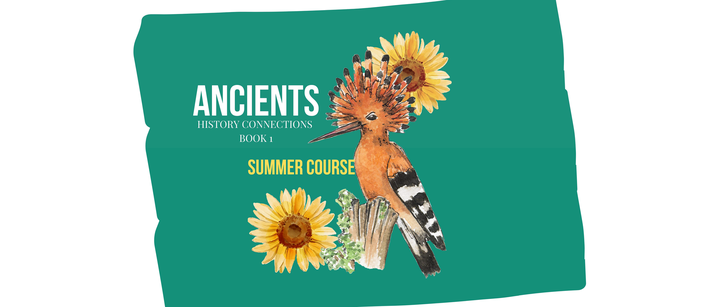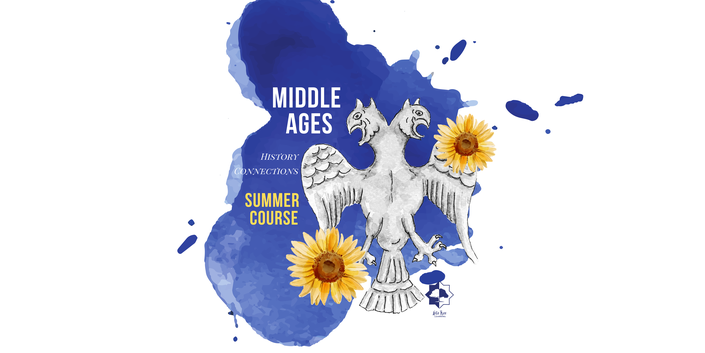Welcome to the Summer Course Ancients for Middle Grades!
This course is designed for upper primary grades (grades 5 and 6).
The summer course runs for 6 weeks, with 2 lessons each week, and is a condensed and abridged form of our Middle Grades Book 1 Ancients for Middle Grades. The Summer course cover certain selected topics and will cover the following 11 prophets:
- Prophet Adam (as)
- Prophet Nuh (as)
- Prophet Ibrahim (as)
- Prophet Lut (as)
- Prophet Ismail (as)
- Prophet Ya'qub (as)
- Prophet Yusuf (as)
- Prophet Shu'ayb (as)
- Prophet Musa (as)
- Prophet Zachariah (as)
- Prophet Yahya (as)
- Prophet 'Isa (as)
For a more comprehensive course, integrating Islamic history into global history and teaching several 21st century skills, graphic designs and different note taking formats, sign up for our academic courses running from September to June!
What do you learn in this course:
The Stories of 11 prophets
The geographical context of these prophets
The historical context of these prophets
How to read a scientific text and extract information out of it
How to make an outline
How to make an info-poster
The Summer Course – Ancients program includes the following:
- Live Lessons on Zoom
- Chapters from History Connections Book 1 – Middle Grades
- Pages from History Intersections
- Super Servants Stories
Classes run Monday & Wednesday 11.30 am PST
Starting June 29th!

Ancients
Middle Grades
Book 1
The ancients start at the beginning of mankind and end with the birth of prophet 'Esa (as).
During the middle years (grade 5 through 8), students will cycle through the same historical periods and science topics as in the primary years, but they will learn how to make connections and study biographies. They will increasingly learn how to ask questions and extract information from a text. On top of that, middle graders will learn several note taking skills, and how to present the information from a text into a graphic. Information is offered, processed and represented in different formats.
This book integrates Islamic concepts into global history and is packed with hands-on activities, visuals. Additionally, the way information is presented caters to different learning styles, in accordance with our unique teaching methodology IDEALS (See more about this below).
The first book is best suited for late primary students, grade 5 and 6, although older students would benefit from this program as well.
Curriculum
Elements in the lessons:
Research: Learning how to read and understand a scientific text is an important life-skill. It helps create life-long and independent learners. In the Research box of the weekly Task Card, the key words are listed. You are encouraged to find the topics in the encyclopedia by yourself, by using the content pages or the index pages. The keywords listed help you in finding the topics in the encyclopedia.
Resources: We have listed the resources that will be used for the week in the resources section of the weekly Task Card. UILE stands for the Usborne Internet Linked History Encyclopedia, HI stands for History Intersections, 2nd edition and the Super Servants Stories are optional.
Skill: The program covers a wide range of skills, including outlining, summarizing, note-taking and mind mapping. These skills are not only useful for the subject of history, but are life-skills to be used throughout a wide range of subjects, both academic as well as non-academic. The difficulty of the skills will be increased over several weeks, allowing you to become proficient through small incremental steps.
Project: Every week, you will create a project: sometimes this is with pen and paper and sometimes this is with an online software. The purpose of the project is to show information you have found in a visual manner.
Map: You will make a map by tracing a Location Map and following the instructions every week. The instructions will tell you what items should be marked and labeled on the map. The map should be made with colors and have as much details as possible. Every map should be labeled at the top with the topic of the week. The purpose of having you trace the map is recognition of topographical landmarks and elements such as mountain ranges, rivers, deserts, seas and oceans, and cities. By physically tracing a map, the information is integrated into your memory. Most Location Maps are traced more than once.
Timeline: Timelining involves the placement of information in chronological order on a visual that represents the passage of time. Most timelines are linear, starting from one point and moving in one direction. Such timelines will give a good sense of the order events are happening in, and which events happen at the same time. However, a linear timeline does not show the different topographical area things happen in at the same time. Therefore, our timeline is circular: it is shaped like a slice of a tree trunk, with the rings showing its years. We have also divided the circular timeline in ‘slices’, like a pizza. Every slice represents a different area of the world. When data is added to the timeline, all events happening in the same rings are happening at the same time, and going from the center to the outer ring in each slice, will show the order events happened in for that particular area.
Every week, you will write the chronological information found (and if applicable, the information in the boxes in the resources,) on the timeline in the topographical area the events took place in. Not only time matters, but also place. See instructions below on how to assemble the timeline.
World Wall Map: In order to have a sense where events on the traced map take place on a global scale, we will ask you to locate the traced map area on the World Wal Map. The World Wall Map is a complete world map without details.
History Connections
History in Context
Our history program is called History Connections, because learning history is all about connections: connections to the past, and connections to each other. Knowing what happened in the past helps us make sense of our present. Knowing how we fit into the larger global history, helps us connect to others. Knowing our heritage gives us a place to belong. Knowledge of history even gives us a basis to determine future actions. Currently, the world has become a global community, making global history all the more pressing. This program focusses on teaching 21st century skills, rather than rote memorization of facts, as this teaches students important skills to function in the modern society of the future.
Our History Connection series covers the ancients all the way up to the modern history and current issues. This series is intended for grade 1 through 8.
Every year students will take a chunk of this history. In the first book, students will cover from Creation to about 500 C.E. In the second book, they will cover from 500 C.E. until about 1650 C.E. The third era will cover from 1650 C.E. until the Industrial Revolution, approximately 1850 C.E. The last era, the Modern Era, will cover from 1850 C.E. until our current day.
All Eras have Islamic History integrated within global history, with more attention and time spend on important topics in the history of our Ummah.
The four books in this curriculum are consecutive, not only in chronological information but also in building skills.





